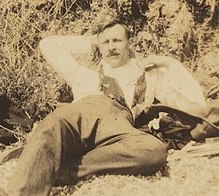
Saxon Arnoll Sydney-Turner [note 1] (28 October 1880 - 4 November 1962) was a member of the Bloomsbury Group who worked as a British civil servant throughout his life.

Saxon Arnoll Sydney-Turner [note 1] (28 October 1880 - 4 November 1962) was a member of the Bloomsbury Group who worked as a British civil servant throughout his life.
Sydney-Turner was the son of a Gloucester surgeon who moved to Brighton in 1893. He attended Westminster School and then read classics at Trinity College, Cambridge where he was a contemporary of Leonard Woolf, Thoby Stephen and Clive Bell. He was very well read and fiercely intellectual. Lytton Strachey wrote of him:
When I first knew him he was a wild and unrestrained freshman who wrote poems, never went to bed, and declaimed Swinburne and Sir Thomas Browne till four o’clock in the morning in the Great Court at Trinity. He is now... quite pale and inanimate, hardly more than an incompletely galvanized dead body.
Leonard Woolf wrote of the older Sydney-Turner, "He looks sometimes like a little schoolboy whom life has bullied into unconsciousness."
Although he did not socialise easily, he was elected a member of the Cambridge Apostles where he spoke very little at meetings. He had wide intellectual and aesthetic interests: poetry, painting, puzzles and music (particularly Wagnerian opera). [1]
Having obtained a double first, he did well enough in the Civil Service examinations to become a civil servant in the Inland Revenue from which he was later promoted to Treasury following this career throughout his life. [1] He was a clerk in the Estate Duty Office 1904-1912 and was in the Treasury from 1913. [2]
Through his university friendships, Sydney-Turner became a member of the Bloomsbury Group where his intellectual erudition could be intimidating. However, he sometimes would spend many hours at their discussion meetings without saying anything at all. [1] In 1917 he joined in a scheme to purchase The Mill House, Tidmarsh, the place lived in by Lytton Strachey, Dora Carrington and Ralph Partridge and which he occasionally visited. [3]
Sydney-Turner never married and, unlike many associated with Bloomsbury, it does not seem he was sexually active. He fell in love with the artist Barbara Hiles, a friend of Dora Carrington, but, when she decided to marry Nick Bagenal, [note 2] Sydney-Turner refused her offer to stay as her lover. [1] He remained a close friend of Hiles and her children.
He was a kind and unambitious person whose friend Leonard Woolf described as "an eccentric in the best English tradition who wrote elegant verse and music and possessed an extraordinary supple, and enigmatic mind". However, Gerald Brenan called him "one of the greatest bores I have ever known" and Lytton Strachey, although a friend at Cambridge, later said of him "there was probably no one less entertaining in the world". [1] [4]
Sydney-Turner gambled away nearly all his money on horse racing. By the end of his life he had become reduced to living in a meagre flat. [1]
His Times obituary by L. W. (Leonard Woolf) said he was a "remarkable man and strange character" and an English eccentric. He lived for over thirty years in a furnished apartment in Great Ormond Street with a large sitting room and a very small bedroom where he kept a stack of "good pictures" by Duncan Grant and other artists. The sitting room fireplace had the same picture on each side, an immense picture of a farmyard scene. At Trinity he got a university scholarship as he was the only candidate who translated correctly a Greek passage with a riddle in it. In later life he was a champion solver of crossword puzzles, and wrote elegant verse and music but published nothing. [5]
His only published writings are a series of contributions to 'Euphrosyne. [6]
The Bloomsbury Group—or Bloomsbury Set—was a group of associated English writers, intellectuals, philosophers and artists in the first half of the 20th century, including Virginia Woolf, John Maynard Keynes, E. M. Forster and Lytton Strachey. This loose collective of friends and relatives was closely associated with the University of Cambridge for the men and King's College London for the women, and they lived, worked or studied together near Bloomsbury, London. According to Ian Ousby, "although its members denied being a group in any formal sense, they were united by an abiding belief in the importance of the arts." Their works and outlook deeply influenced literature, aesthetics, criticism, and economics as well as modern attitudes towards feminism, pacifism, and sexuality.
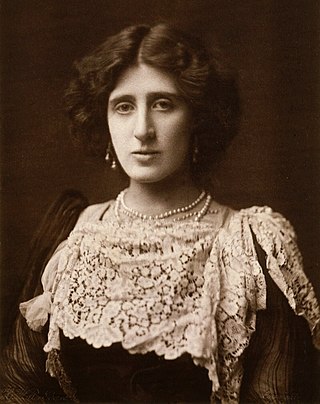
Lady Ottoline Violet Anne Morrell was an English aristocrat and society hostess. Her patronage was influential in artistic and intellectual circles, where she befriended writers including Aldous Huxley, Siegfried Sassoon, T. S. Eliot and D. H. Lawrence, and artists including Mark Gertler, Dora Carrington and Gilbert Spencer.
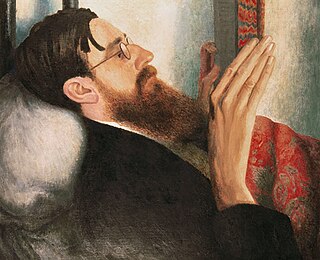
Giles Lytton Strachey was an English writer and critic. A founding member of the Bloomsbury Group and author of Eminent Victorians, he established a new form of biography in which psychological insight and sympathy are combined with irreverence and wit. His biography Queen Victoria (1921) was awarded the James Tait Black Memorial Prize.
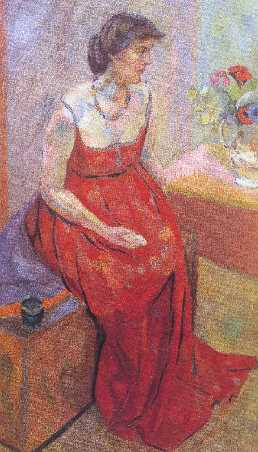
Vanessa Bell was an English painter and interior designer, a member of the Bloomsbury Group and the sister of Virginia Woolf.

Dora de Houghton Carrington, known generally as Carrington, was an English painter and decorative artist, remembered in part for her association with members of the Bloomsbury Group, especially the writer Lytton Strachey. From her time as an art student, she was known simply by her surname as she considered Dora to be "vulgar and sentimental". She was not well known as a painter during her lifetime, as she rarely exhibited and did not sign her work. She worked for a while at the Omega Workshops, and for the Hogarth Press, designing woodcuts.

Sir Arthur Lawrence Hobhouse was a long-serving English local government Liberal politician, who is best remembered as the architect of the system of national parks of England and Wales.

Dorothy Bussy was an English novelist and translator, close to the Bloomsbury Group.
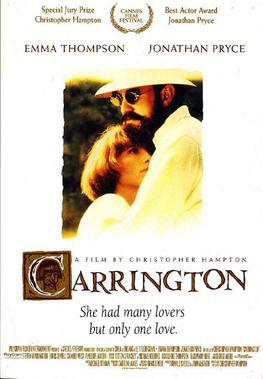
Carrington is a 1995 British biographical film written and directed by Christopher Hampton about the life of the English painter Dora Carrington (1893–1932), who was known simply as "Carrington". The screenplay is based on Lytton Strachey: A Critical Biography, the 1967-68 two-volume biography of writer and critic Lytton Strachey (1880–1932) by Michael Holroyd.
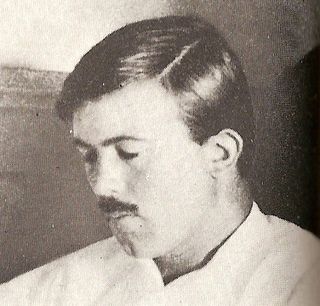
Edward FitzGerald "Gerald" Brenan, CBE, MC was a British writer and hispanist who spent much of his life in Spain.
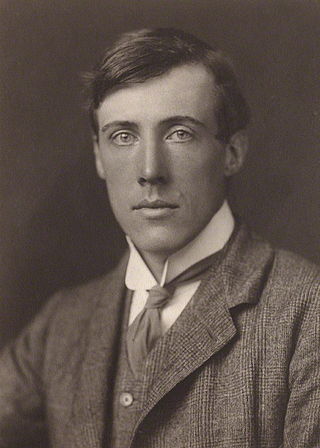
Julian Thoby Stephen, known as the Goth, was the brother of Vanessa Bell and Virginia Woolf, both prominent members of the Bloomsbury Group, and of Adrian Stephen.

James Beaumont Strachey was a British psychoanalyst, and, with his wife Alix, a translator of Sigmund Freud into English. He is perhaps best known as the general editor of The Standard Edition of the Complete Psychological Works of Sigmund Freud, "the international authority".
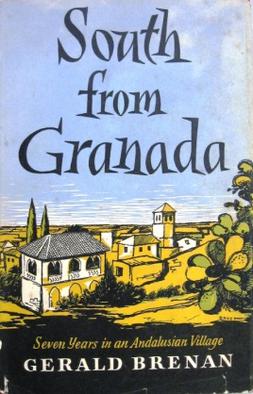
South from Granada: Seven Years in an Andalusian Village is an autobiographical book by Gerald Brenan, first published in 1957.

Frances Catherine Partridge CBE was an English writer. Closely connected to the Bloomsbury Group, she is probably best known for the publication of her diaries. She married Ralph Partridge in 1933. The couple had one son, (Lytton) Burgo Partridge (1935–1963).

Julia Strachey was an English writer, born in Allahabad, India, where her father, Oliver Strachey, the elder brother of Lytton Strachey, was a civil servant. Her mother, Ruby Mayer (1881-1959), was of Swiss-German origin. For most of Julia's life she lived in England, where she worked as a model at Poiret, as a photographer and as a publisher's reader, before she embarked upon a career in novel-writing. She is perhaps best remembered for her novella Cheerful Weather for the Wedding.
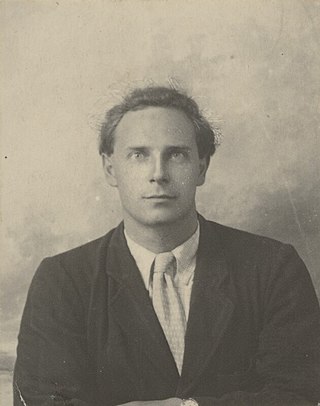
Reginald Sherring Partridge,, generally known as Ralph Partridge, was a member of the Bloomsbury Group. He worked for Leonard Woolf and Virginia Woolf, married Dora Carrington and then Frances Marshall, and was the unrequited love of Lytton Strachey.
The Bloomsbury Group plays a prominent role in the LGBT history of its day.
Life in Squares is a British television mini-series that was broadcast on BBC Two from 27 July to 10 August 2015. The title comes from Dorothy Parker's witticism that the Bloomsbury Group, whose lives it portrays, had "lived in squares, painted in circles and loved in triangles".

Barbara Hiles Bagenal (1891–1984) was an artist associated with members of the Bloomsbury Group, primarily Vanessa Bell and Saxon Sydney-Turner. She was a long-time friend of fellow "Bohemian" and artist Dora Carrington.
Lytton Strachey: A Critical Biography is a 1967–68 two-volume biography of Lytton Strachey by Michael Holroyd, the author's magnum opus. He published a revised version in 1994 under the revised subtitle, The New Biography.